Disclosure: This article may contain affiliate links. If you decide to make a purchase, I may make a small commission at no extra cost to you.
When starting calorie restriction it’s important that you go to your doctor to get various biomarkers measured. Things like weight, blood pressure, temperature, and also a number of blood tests which will guide you in your calorie restriction practice.
A few things can now be tracked at home, but for tracking many calorie restriction biomarkers we still need to get tests done by professional lab testing. Do not skip this step – it will not only give you an idea of whether or not you’re in the “CR Zone”, but it will also help motivate you to try hard to achieve the results you want.
Body Temperature On Calorie Restriction
One of the earliest effects of calorie restriction is its effect on core body temperature. It’s not only because of the loss of fat that you feel cold. The hypothalamus lowers the “set-point” body temperature by half a degree or more. In my own case, my body temperature has been lowered by 1.0 Degree Celsius since starting calorie restriction. If body temperature is not reduced after starting calorie restriction, it’s possible that you aren’t restricted enough to produce this effect.
There are also, of course, other reasons why body temperature does not decrease immediately. For some people, their thyroid might be slower to respond and the decrease in T3 is slower. Or it might be that there is a subclinical infection in the body or some autoimmune disease process going on (these usually produce other symptoms other than just pyrexia). There are also less common causes for increased temperature set point.
Also, you have to remember that body temperature will vary a lot during the day – it goes through a natural cycle – where it is low in the morning and peaks during the evening. Exercising and eating food will also temporarily increases body temperature.
When keeping track of the effects of calorie restriction on body temperature you have to keep the measurements consistent. The variations will also shift depending on your circadian rhythm. So if you are working night shifts and waking up in the evening, this is still your morning temperature or more correctly, waking temperature.
Measure first thing in the morning when you wake up and keep a log of this using a notepad or inputting the data into Google spreadsheet, perhaps. Low body temperature has been linked to longevity in both animals and humans, so keep track of it and hopefully, you’ll notice a drop within a short time after starting the diet.
Measure first thing in the morning when you wake up and keep a log of this using a notepad or inputting the data into Google spreadsheet, perhaps. Low body temperature has been linked to longevity in both animals and humans, so keep track of it and hopefully, you’ll notice a drop within a short time after starting the diet.
I try to avoid putting on jumpers or anything to increase my body temperature when I’m feeling cold because this effect is likely to be partly responsible for the increase in longevity in animals and humans. In fact, raising the body temperature of mice on calorie restriction abolishes the strong anti-cancer effect of CR!
Which type of thermometer to use: When I first started calorie restriction I used underarm measurements, but this is the least reliable method to measure your core body temperature accurately. Using oral thermometers are more accurate, but they are slow and can also be affected by cold and cold foods or liquids you recently had.
So, in 2006 I bought a Braun ThermoScan Ear Thermometer and still use the same one today! All I really need to do is replace the cheap protective caps when they have worn out. It also takes literally 2 seconds to measure core body temperature and is very accurate as it takes the reading from one of the main arteries. It’s also just useful to have around in the house as my parents and sister use it for the kids when they are unwell.
See an article on Calorie Restriction Lowers Body Temperature and Slows Aging
Blood Pressure on Calorie Restriction
The amazing thing about calorie restriction is the dramatic effect it has on blood pressure. When I started the diet I was still quite young, so my blood pressure was still low. I had also exercised almost my entire life so this had a protective effect from the high levels of salt and the effects of a terrible diet.
My blood pressure reading between 100-115 systolic before I started calorie restriction. Now, it’s not uncommon for me to see 90/60 throughout the day when I am relaxed. I don’t get any symptoms of low blood pressure either – this is because the body is able to adapt so you are less likely to experience orthostatic hypotension (dizziness when standing up too quickly).
If you have high blood pressure and would like to lower it, losing weight is one of the most effective ways to do get the numbers into a healthier range. In one study at WUSTL, they found people on calorie restriction for one year had their blood pressure decrease from 132 / 80 mmHg to 112 / 80 mmHg. When they began the study, the CRONies were already on the diet for 6 years and their reading was even lower by this point: 97/59.
Although blood pressure generally rises throughout age because of the stiffening of blood vessels and the heart muscle, this dysfunction can be ameliorated by long-term calorie restriction.
| Systolic (first number) |
Diastolic (second number) |
|
|---|---|---|
| Normal Blood Pressure | Less than 120 | Less than 80 |
| Prehypertension | Between 120–139 | Between 80–89 |
| High Blood Pressure | 140 or more | 90 or more |
| Isolated Systolic Hypertension | 140 or more | Less than 90 |
Tips to lower blood pressure
- Reduce salt intake and eat foods higher in potassium
- Practice meditation and breathing exercises to help deal with stress better
- Practice Yoga
- Consume Garlic or take Garlic capsules such as Allicin Max
- Regular aerobic exercise – at least 20 minutes a day (10-15 miles a week is adequate)
Get a reading from your doctor or pharmacy and then track your own blood pressure over time using a blood pressure device. I have both a wrist cuff and upper-arm cuff to measure my blood pressure. The wrist ones are absolutely fine as long as they are used correctly – the arm needs to be level with the heart. This is a very good pressure monitor that I recommend: Omron Upper Arm Blood Pressure Monitor
One of the positive benefits of having a blood pressure monitor at home is not that you can just track your changes in blood pressure and how it relates to what you’re doing – but it is also likely to be more accurate. Many people who go to have their blood pressure checked at the doctor’s office will have increased anxiety and have much higher readings than normal.
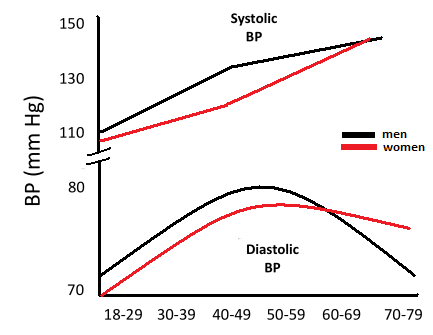
It’s now known that the damaging effects of diet can be seen in young kids – they are not immune to because they are young. Although the overall physiological effects are small, they do ‘set the stage’ for cardiovascular disease.
By eating a healthy diet and practicing calorie restriction, you will be able to prevent the age-related increase in blood pressure. People that practice calorie restriction was reported to have extremely low blood pressure for their age – equivalent to that of a child.
Blood Tests
Although there are some devices that can measure certain things in the blood, it is better to get your blood test done by a proper lab for the moment.
- Fasting Total Cholesterol, LDL, HDL, Triglycerides
- Fasting Glucose
- Liver Panel
- Renal Panel
- C-Reactive Protein
- Testosterone and/or Estrogen
- Thyroid panel: fT3, fT4 & T.S.H
- B12, Folate, and Ferritin
- Full Blood count: white blood cell and red blood cell differentials counts
- IGF-1
All of these tests will give you an excellent baseline so you know exactly where you are and where you need to get to. These are general guidelines of targets you should aim for.
Fasting Lipids
While it is likely that cholesterol is not the sole cause of atherosclerosis, its contribution to it is clear. In the Framingham Heart Study, no person with a total cholesterol below 150 mg /dl had died of a heart attack. The average cholesterol in some parts of the world where people live primarily on a plant-based diet is about 120 mg /dl. My own total cholesterol has been as low as 109 mg/dl when I was super strict with my diet!
These are what I believe to be optimal and realistic goals
| Normal mg/dl |
Optimal mg/dl |
|
|---|---|---|
| Total Cholesterol | 100 – 199 | < 160 |
| LDL Cholesterol | 0 – 129 | < 80 |
| HDL Cholesterol | 40 – 59 | > 60 |
| Triglycerides | 0 – 149 | < 100 |
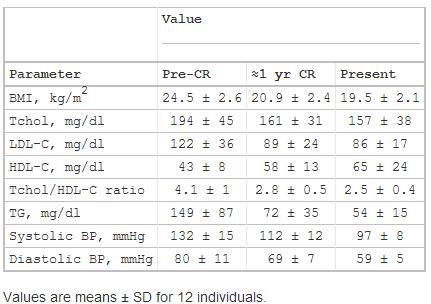
As you can see above, improving your cholesterol can be done if you adhere to a strict CR diet.
Fasting Glucose
Elevated levels of glucose = faster aging. To activate the pathways and responses necessary to increase the benefits of calorie restriction – aim to get your glucose levels at the lower end of normal
Normal Fasting Range: 70 – 100 mg/dl
Your target: below 85 mg /dl

Liver Function
When beginning the diet you will likely see some changes in your liver enzymes – but this is nothing to worry about. Alkaline Phosphatase will increase significantly during the weight loss period and will gradually go down once you have stabilized. You might also notice an increase in Bilirubin to high – normal levels and is nothing to be concerned about.
Kidney Function
One of the main changes here is likely to be with Urea and Creatinine – on a low protein-calorie restricted diet they will likely both decrease to low – normal levels.
C – Reactive Protein
This is a protein in the blood which is a good marker of chronic or acute inflammation. When you have an active infection, it is very high. Most people have low-grade chronic inflammation which doesn’t cause any symptoms, but over the long term is damaging to our health and is one one of the main drivers of cardiovascular disease and cancer.
Normal Fasting Range: 0 – 5 mg/L
Your target: 0.2 – 1 mg/L
(note: I recommend getting a hsCRP test done if its available because it can measure very low levels of this protein that is below <1mg/L)
Testosterone and Estrogen
In men, there will be a decrease in testosterone from baseline values. This is completely reversible when calories are increased! And although calorie restriction decreases the level of these hormones, they are much slower to decline during aging. In fact, we see the same in Okinawan’s – they initially start off with lower levels of testosterone but the rate of decline is much slower.
Although one can try to increase their testosterone while on CR (it can be done), this could interfere with the effects of CR on lifespan. There is also less likely to be such a big decrease in young men compared to this group in which the average age was 51 years.
There is very little data on Estrogen and calorie restriction in CRONIes due to the low number of participants. We do know however that estrogen is also decreased after starting calorie restriction.
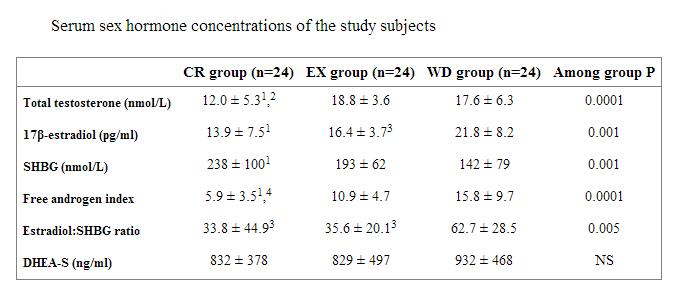
Long-term effects of calorie restriction on serum sex-hormone concentrations in men.
http://www.ncbi.nlm.nih.gov/pubmed/20096034
Thyroid Panel
Calorie restriction has significant endocrinological effects, especially on the thyroid. In animals and humans, we see a significant decrease in Free T3 (fT3) thyroid hormone. In a study published in 2006, they showed that the CR group had T3 levels which were at the lower end of normal (CR) 73.6 vs (WD) 94.3
Energy intake was lower in the CR group (1779 +/- 355 kcal/d) than the WD (2433 +/- 502 kcal/d) and EX (2811 +/- 711 kcal/d) groups (P < 0.001). Serum T(3) concentration was lower in the CR group than the WD and EX groups (73.6 +/- 22 vs. 91.0 +/- 13 vs. 94.3 +/- 17 ng/dl, respectively) (P < or = 0.001), whereas serum total and free T(4), reverse T(3), and TSH concentrations were similar among groups.
Ferritin
This test is especially important for women to get done. Calorie restriction is known to decrease iron levels and thus decrease ferritin. A few people on calorie restriction have reported anemia even with adequate levels of iron in their diet – so this is important to measure, especially if you’re vegetarian or vegan. My own ferritin levels decreased from 136 to 62 (normal 15-300) – indicating that my iron stores decreased significantly. High levels of iron are thought to be linked to inflammation, heart disease, so we should aim to decrease it.
Your target: Under 100
Full Blood Count
The main changes you should expect to see are the following:
- A decrease in red blood count measuring between low normal or slightly lower than normal levels
- Decrease in HB
- A decrease in platelet count. Typically under 200 (range 140-400)
- A decrease in white blood count to levels between 3.5 – 5.0 (range 4 – 11)
- A decrease in lymphocyte count *
Doctors might be concerned with the hematologic changes more than anything else after you start a calorie restriction diet. It’s common for a white blood count to go to levels below the *normal* reference range. This, however, is an effect of calorie restriction and does not pose any significant risks by itself.
IGF-1
IGF-1 has been implicated in the risk for many diseases and aging. Calorie restriction by itself without protein restriction does not decrease the level of IGF-1. In 2008 a study was published showing that in order for IGF-1 to be decreased in CR volunteers, they had to decrease protein intake to approximately 10% of their caloric intake. When they reduced protein, their IGF-1 levels decreased.
Protein from meat has a bigger impact than protein from plant-based sources like soybeans, rice, pumpkin seeds, hemp etc.
Reducing protein intake from an average of 1.67 g kg(-1) of body weight per day to 0.95 g kg(-1) of body weight per day for 3 weeks in six volunteers practicing CR resulted in a reduction in serum IGF-1 from 194 ng mL(-1) to 152 ng mL(-1). http://www.ncbi.nlm.nih.gov/pmc/articles/PMC2673798/
If you have any questions regarding other changes during CR, please just comment below and I’ll respond as soon as I can!
Hopefully, in the near future, we’ll have devices which can measure various things quickly and cheaply. With the rapid advances in technology, no doubt we’ll be able to quickly see the effects changes in our diet has on our body and then adjust accordingly. The device below in the video shows us a glimpse of the near future
Measuring calorie restriction biomarkers will enable you to get the best results. We are all different, so it’s important that we understand our own body the best we can and make informed choices.
Reviewed and updated 09/2018






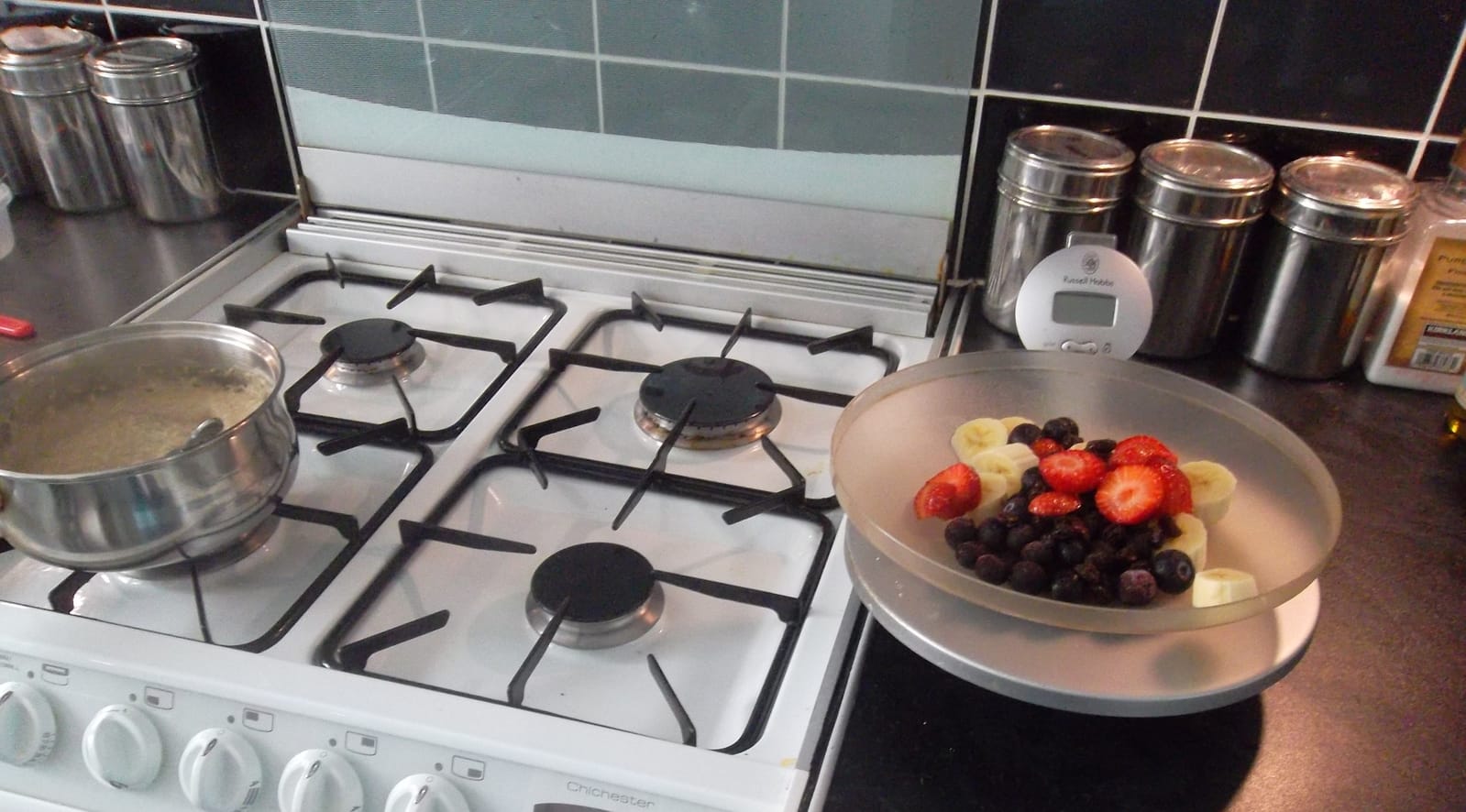

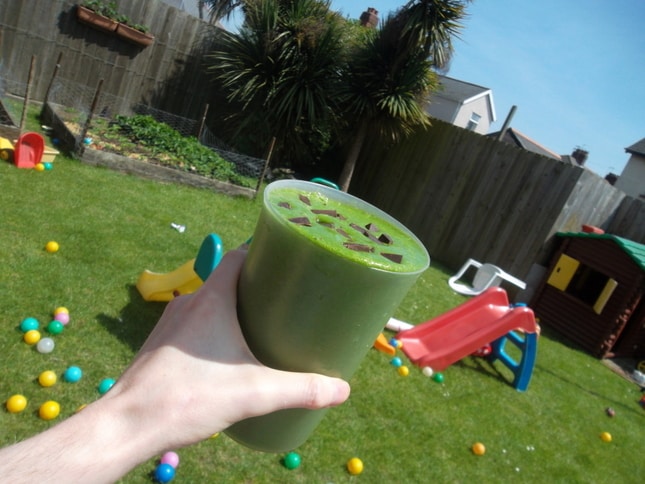
Hi Matt ..just a quick note to say thanks for that great editorial ..brilliant piece of writing and very informative ..keep up the good work
Thanks Leo! 🙂
Hi Matt,
We started on our cron diet middle last week. My bf and I have been both feeling really good so far eating this way and it’s been really educational as well putting the foods in the cron o meter. I’m really excited for the first time to get my health back in order. I have had gallbladder problems for many years now, eating too many oily foods or rich food, and dairy especially. Anyway, I am looking forward to feeling better and having a healthier digestive system, so thank you for all the advice and research you post! Have been enjoying it very much 🙂
Hi Paula!
That’s awesome! 🙂 Do you drink green smoothies or green juices at all?
Thanks for reading and commenting. :3
Hi Matt,
Thanks for your reply! Yes, I do and have even before CRON diet drank green smoothies and fresh juices. Especially, the juices because it makes a huge positive difference in my gallbladder. I’m glad you brought this up because I have been worried about the oxolates in spinach. Previously, I had thought if you cooked the spinach then you would be fine with the oxolates but after reading more about it, I’m not sure, according to some information that came up though I admit, I didn’t check resources :/ Some things I read are that your body can not absorb the calcium in spinach because of the oxolates and also the build up of oxolates around tissues and joints can accumulate causing joint pain, and for some women very painful or sensitive intercourse. If this is true, it really sucks because spinach is a nutrient power house as you are well aware of. So, have you read much about this? I am down almost 5 lbs, when I lose the other 10 I will be back to my highschool weight of 115 lbs which I haven’t been in 8 or more years! Thank you Matt! Hope you make this a fantastic day! Be well 🙂
Avid follower of your blog. Thanks for keeping it up to date.
Please excuse my ignorance, but I’m trying to calculate my daily protein intake to the one suggested based on the study’s outcome of reduction in IGF-1. Not entirely sure of the inclusion of -1 after 0,95. Am I supposed to multiply 0,95 with how much I weight?
Appreciate your time and response 🙂
Except if your name is Ann then your testosterone and androgens shoot up :p
[…] and low serum ferritin has been connected to caloric restriction: Calorie Restriction Biomarkers | CR Vitality. So just eating a more normal intake of food might help. Mellie, "crash diets" and […]
Thanks for the article! Just wondering, how does it work for someone who’s already at a weight that’s considered healthy? I assume a calorie-restricted diet could be harmful in that case, but would that person be able to achieve the same healthy signs (low blood pressure, core temperature, etc.) by eating a healthy (but not CR) diet?